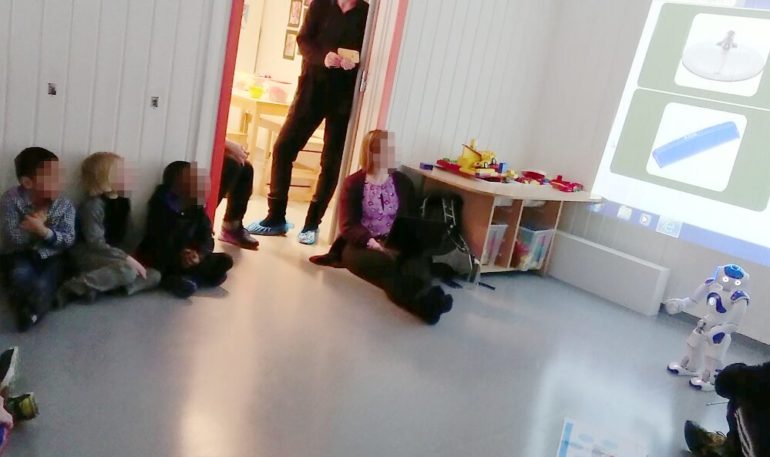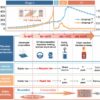November 11, 2020
feature
As robots share many characteristics with toys, they could prove to be a valuable tool for teaching children in engaging and innovative ways. In recent years, some roboticists and computer scientists have thus been investigating how robotics systems could be introduced in classroom and pre-school environments.
To explore the value of social robots in education, researchers at the Norwegian Computing Center recently tried to use them to teach Norwegian to immigrant children residing in the Grorud district in Oslo. Their paper, pre-published on arXiv and presented as a late-breaking report at this year’s ACM’s Human-Robot Interaction (HRI) Conference, demonstrates some of the possible benefits of introducing robotic systems within early learning environments.
“The main inspiration for our study was the fact that some districts in Oslo have a large number of children that do not speak Norwegian at home,” Trenton Schulz and Till Halbach, two of the researchers who carried out the study, told TechXplore. “Daycare centers have programs to help these children learn Norwegian. One of these programs, called ‘language shower,’ is designed to expand the children’s vocabulary. Our study explored the possibility of using robots to deliver this program.”
The basic idea behind the study carried out by Schulz, Halbach and their colleague Ivar Solheim was to support teachers delivering the language learning program using a social robot. This program is currently offered to children aged three to six at local daycare centers in Oslo’s Grorud district, but it also has an additional component that can be provided to the children’s families to help them practice their language skills at home.
In Autumn 2018, the researchers carried out a small-scale study to evaluate the potential of their design, which involved children at a number of daycare centers within the Grorud District. The learning sessions they designed were delivered to a maximum of 15 children at a time, using a small social robot called Nao, which was linked to an application projected on a wall in front of them.
This application produced pictures representing the terms that the children were trying to learn (e.g., a chair, fork, shower, etc.). Subsequently, the robot asked the children to name the objects they were seeing out loud and processed their answers using a speech recognition engine to determine whether it was right or wrong.
“The robot acted as a lesson leader, guiding the children through a lesson on the tablet,” Schulz and Halbach explained. “The tablet would show pictures of different things and ask children to say what it was. It would then listen and say whether a child’s answer was correct. Finally, the robot performed different actions, playing songs and dancing if the children answered correctly.”
The application developed by the researchers can also be used in isolation, without a Nao robot. This means that parents could easily download it, using it themselves to improve their Norwegian or to help the children practice their language skills at home.
“Overall, we feel that the pilot studies we carried out were successful, as the children who participated seemed to enjoy interacting with the robot,” Schulz and Halbach said. “We are currently evaluating whether the children’s vocabulary develops more than when they take part in the conventional version of the ‘language shower’ program (i.e., without the use of robot technology), through a six-week study.”
Should the ongoing evaluation study by Schulz, Halbach and Solheim yield positive results (i.e., should they find that their technology-based learning strategy compares favorably to the original language shower program), their learning system could eventually be implemented at other daycare centers and nursery schools in Oslo or other districts in Norway. In addition, their work could inspire other research teams to create similar robotics-based approaches designed to teach different languages to children.
“We are now looking at other areas where we could help to develop language and social skills,” Schulz and Halbach said. “One example is children with autism. At the moment we are focusing on Norwegian, but the program could eventually be adapted for teaching other languages and different subjects as well.”
Why R2-D2 could be your child’s teacher sooner than you think
More information:
Schulz et al., Using social robots to teach language skills to immigrant children in an Oslo City district. arXiv:2010.05491 [cs.RO]. arxiv.org/abs/2010.05491
2020 Science X Network
Citation:
Using social robots to improve children’s language skills (2020, November 11)
retrieved 15 November 2020
from https://techxplore.com/news/2020-11-social-robots-children-language-skills.html
This document is subject to copyright. Apart from any fair dealing for the purpose of private study or research, no
part may be reproduced without the written permission. The content is provided for information purposes only.



